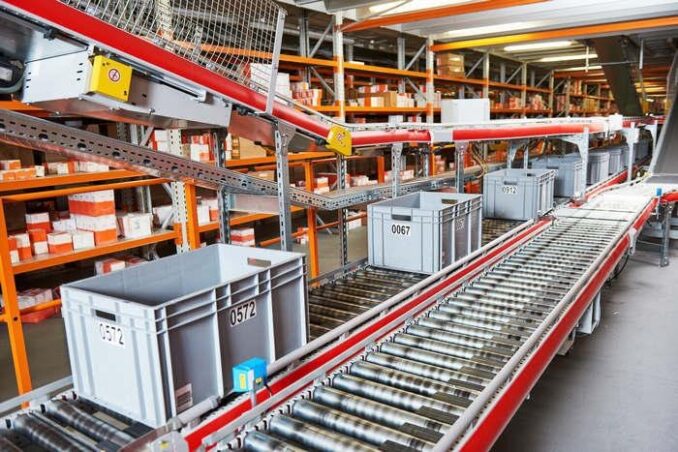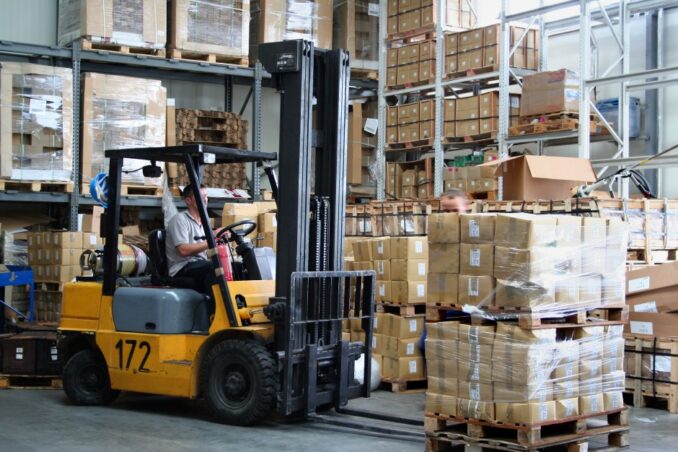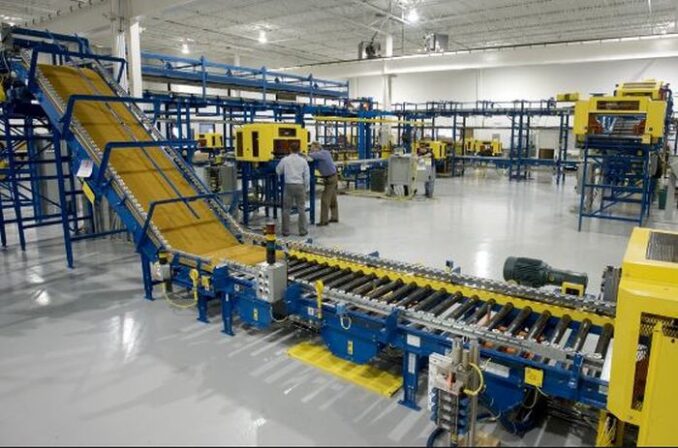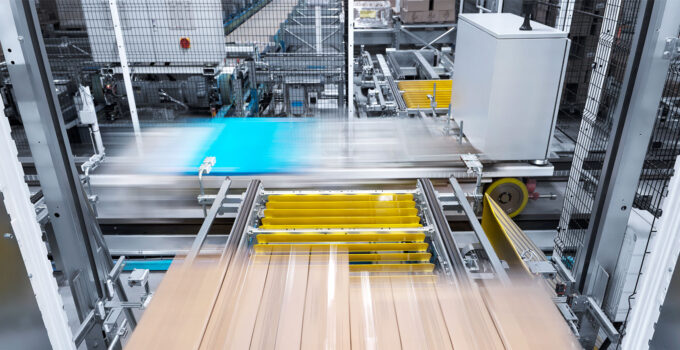Technology has simplified the handling of materials and movement from one place to another, saving time and money. The equipment designed with the material handling can be categorized in four ways. And every category has important equipment that allows heavy materials to move safely and in large volumes from one place to another with ease.
Storage & Handling Equipment
The storage equipment is designed to hold materials waiting to be transported from the wholesaler or manufacturer to the final destination. When you have quality equipment for storage, it is easier to see increased productivity on the production floor. Also, that can maximize utilization, which are the most important aspects in any production setting.

Source:Newcastle systems
Samples of Storage & Handling Equipment
- Shelves
- Bins and drawers
- Mezzanines: It is a raised floor system designed to stand between the ceiling and production floor to help provide extra storage space. Sometimes these structures can easily be pulled apart and moved without any issue.
- Racks: They resemble pallet racks, sliding shelves, push backs, or drive-in racks.
- Stacking frames: These frames interlock with each other and allow stacking of a load and make it hard for them to crush.
Industrial Trucks
Industries have powered trucks such as forklifts, designed to transport large quantities of materials from one place to another on the manufacturing floor. Here are some of the powered industrial trucks:
- Pallet Jacks – They are basic forklift designed to lift pallets and move them within a warehouse.
- Hand Trucks – They are known as box cart or dolly and are designed with an appearance of I-shape box moving hand carts having handles on one side, a ledge to help set the items on, and wheels at the base for more effortless movement.
Platform trucks look the same with a two-wheeled dolly, only that they have a deck extension.
- Sideloader – This one is an automated loader similar to a forklift that helps load items and unloads them from the side rather than the front part.
- Automatic guided vehicles

Source:webnettraining.com
Engineered Systems
Engineered systems are automated units designed to use coordinated efforts to allow well-organized storage and transportation of large volumes of materials from one place to another on the production floor. Here are examples of engineered systems:
- Automatic guided vehicles: These are mobile robots designed to follow specific wires or markers in the manufacturing floor by moving large volumes of materials from one place to another. Sometimes they use lasers, magnets, visions for their operations.
- Robotic Delivery Systems: These are automated systems and ideal for allowing items to move through a plant or using an assembly line or warehouse.
- Conveyor systems: These are automated systems designed to transport a large volume of goods from one place to specified destinations through a live roller, belts, or flexible chains. They are the most efficient moving large items and help move items very fast.
- AS/RS – They are automated retrieval systems (Automated Storage and Retrieval Systems) designed with automated structures that include racks, shelves, and aisles. They are accessible using a mechanized shuttle system such as a cherry picker for speedy retrieval of items.
Bulk Material Handling Equipment
Equipment designed to handle bulk management helps in transportation plus control of large volumes of items in loose form or bulk. The equipment moves lose parts in the production floor from one place to another. Bulk materials handling systems may use conveyor belts for the horizontal movement of items, while elevators for vertical transportation. Here are the examples of bulk material handling equipment below:
- Grain elevators: This equipment is designed to store and transport grain and related materials around the production pathway.
- Bucket elevators: These elevators help to haul flowable bulk items vertically.
- Reclaimers: These equipment types are extra-large and recover bulk items from a stockpile.
- Stackers – These equipment function like forklifts and are designed to lift and stack heavy items in the warehouse or dock.
- Hoppers – These are containers for carrying bulk grain materials
- Silos: This is a tower designed to store items such as woodchips, sawdust, coal, and food products.
- Conveyor belts
New Technology
Nowadays, conveyor systems are continuing to improve through innovation. Today, it is easier for conveyors to show status reports back to the local control level and original equipment manufacturer (OEM) for assistance in establishing issues before they bring operational downtime.
What is the Importance of Material Handling?

Source:industrybuying.com
Well-designed material handling systems help reduce inventory, enhance customer service, streamline delivery times, and lower manufacturing costs and distribution. Many industries and warehouses utilize material handling systems from providers like Mainway Handling such as:
- Automotive
- Aerospace
- Food & beverage
- Chemicals
- Consumer goods
- eCommerce
- Retail
- Pharmaceutical
- Medical facilities
In all industries that rely on material handling, the largest field of manufacturing applications. Problems that material handling assist are comprised of equipment layouts, plant, packaging, and storage. For instance, the construction industry requires proper acceptance of materials, sorting, storing, and movement. And today, you will find specific methods and tools that help guide civil engineers when they are tackling projects.
Why You Should Incorporate Material Handling into Your Planning
Many businesses rely entirely on warehouses to run their daily operations. The warehouses comprise thousands of materials and without a proper handling system installed, it can stall operations. Here are some of the reasons material handling processes are vital in companies.
Improved efficiency: With the right tools, facilitation of products and material organization becomes easier to track inventory accurately and minimize the time spent on retrieving warehouse products.
Reduced product damages: It has reduced the damage of improperly stored items and movements from one place to another.
Accident Prevention – Right equipment and proper machines to lift, move and store items minimize worker risk. Study shows that about 25 percent of temporary disabilities and 21 percent of permanent disabilities happen due to wrong material handling.
Better plan layouts: When you take time to plan and invest in your warehouse storage, it helps you to maximize space, minimize accidents, and create a safer environment for all.





